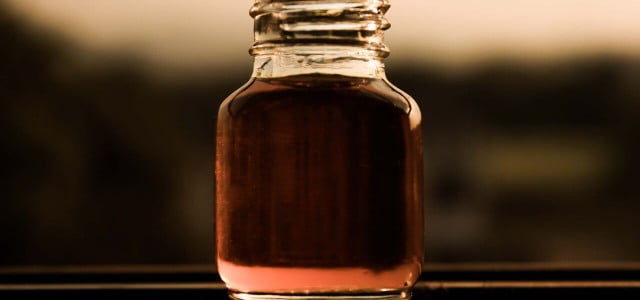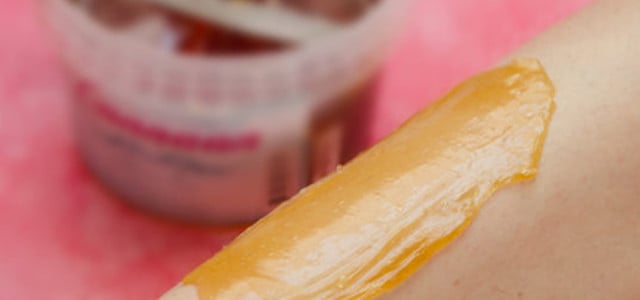Do you know how to make rose water at home? Get the benefits of this natural beauty solution via hot and cold brewing methods, and find answers to frequently asked questions.
Long ago, Ancient Egyptians held roses as powerful symbols of love and beauty, a sentiment that resonates deeply even today. Historical documentation reveals their use of rose water tonics, which they believed contributed to their beauty and health — and were even used as aphrodisiacs.
Today, the allure of roses persists, transcending millennia. The wide-ranging benefits of rose water continue to captivate us, contributing to its sustained popularity in health and beauty routines worldwide. We’ll show you how to make rose water at home, why distilled water is a critical component and explore the numerous practical applications of this natural product.
The Benefits of Rose Water: A Testament to Age-Old Wisdom
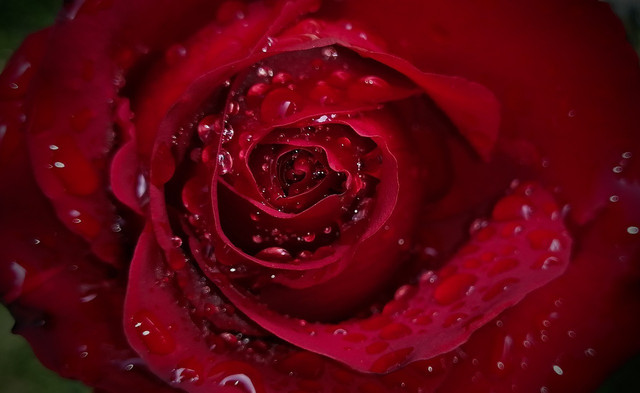
Rose water offers a wide range of compelling, holistic benefits that make it a valuable ingredient to have in your home beauty routine.
What Is Rose Water Good For?
-
- Skin Tonics: As a natural toner, rose water for skin helps balance skin pH levels, tighten pores and rejuvenate the complexion. It’s a gentle option that works well for all skin types.
- Anti-Inflammatory Properties: The water’s anti-inflammatory properties can reduce skin redness and irritation. It’s often used to soothe conditions like eczema and rosacea, as well as to accelerate the healing of minor cuts and burns.
- Antioxidants: This DIY beauty tonic is packed with antioxidants that protect cells from environmental damage, such as pollution and UV radiation. Regular use can promote healthier, younger-looking skin and may prevent signs of aging.
- Hydration: It is a natural moisturizer that can provide hydration for both the skin and hair, reducing dryness and leaving a refreshing feel.
- Mood-Boosting Effects: The scent of rose water is known to have mood-enhancing properties. It can reduce feelings of anxiety and promote emotional well-being, making it a popular choice in aromatherapy practices.
- Eye Care: It can be used to soothe tired, irritated eyes. Its anti-inflammatory properties can reduce puffiness and redness, providing relief after a long day.
- Healthful drinks: You can also drink rose water to enjoy its many benefits directly. Pour it over ice, in a refreshing cocktail or add it to your tea for some aromatherapy goodness.
Roses also contain essential oils such as citronellol and geraniol, further enhancing their value. These oils boast a plethora of beneficial anti-microbial, anti-fungal and analgesic properties.
Today, roses continue to hold a crucial role in holistic and traditional medicinal practices, particularly in countries like Iran and Turkey, where they have been woven into the cultural fabric for centuries.
How to Use Rose Water



Once you’ve learned how to make rose water at home, there are a multitude of ways to incorporate it into your daily routine:
- Skin Care: Apply it as a toner using a cotton pad after cleansing to hydrate and balance your skin. Its gentle nature makes it suitable for all skin types. For a refreshing pick-me-up during the day, spritz it on your face as a revitalizing rose water mist. This not only refreshes your skin but also uplifts your mood with its subtle, calming aroma.
- Hair Care: Add it to your regular shampoo or conditioner to hydrate your hair and improve its shine. Alternatively, you can spray rose water directly onto your hair as a hydrating mist to combat dryness and frizziness, leaving your hair smelling divine. Tip: Try adding it to a homemade rice water shampoo or DIY conditioner for a fragrant, natural hair care treatment.
- Eye Care: Soaked cotton pads in rose water can be placed over the eyes to reduce puffiness and soothe tired eyes, thanks to its anti-inflammatory properties.
- Delicious Recipes: Rose water is a popular ingredient in the kitchen. Use it to add a unique floral flavor to drinks like lemonade or cocktails, desserts such as puddings or cakes, or even savory dishes. It’s widely used in Middle Eastern and Indian cuisines to enhance the sensory experience of their traditional dishes.
- Aromatherapy and Home Fragrance: Add it to your diffuser, or create a homemade room freshener by adding it to a spray bottle with distilled water. The calming scent of roses can transform your home environment into a peaceful, stress-free sanctuary.
How to Make Rose Water: The Hot Water Method
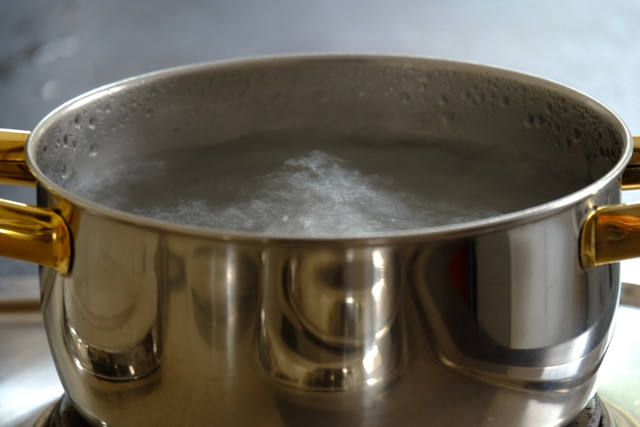


All you need to make rose water at home is roses and distilled water. If you can’t get your hands on distilled water, filter water is the next best option. However, tap water absolutely works in a pinch — learn how to distill water if you’re so inclined.
- Pick Your Roses: Start with fresh, organic roses. The quality of the roses directly influences the quality of the final product.
- Clean the Petals: Separate the petals from the rest of the flower. Rinse thoroughly to remove any dirt or bugs.
- Heat Your Water: Bring your distilled water to a simmer in a large pot. Use enough water to cover the rose petals.
- Simmer the Petals: Add the rose petals to the simmering water. Cover the pot and allow the petals to simmer until they lose their color.
- Strain and Store: After the petals have lost their color, strain the liquid into a sterilized container. Allow it to cool before sealing and storing it in a cool, dark place.
How to Use The Cold Water Method
If you prefer a heat-free method, here’s how to make rose water using cold, distilled water:
- Prepare the Roses: As in the hot water method, begin by selecting fresh, organic roses and thoroughly cleaning the petals.
- Soak the Petals: Place the clean petals in a large jar and cover them with distilled water.
- Wait and Strain: Let the jar sit for 24-48 hours, allowing the rose essence to infuse into the water. Afterward, strain the liquid into a clean, sterilized container.
- Store: Seal the container and store your rose water in a cool, dark place.
Potential Risks of Rose Water
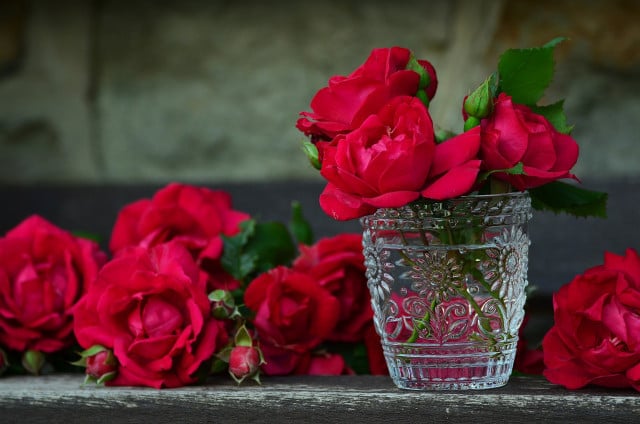


As beneficial as rose water can be, it’s important to consider some of its potential risks:
- Allergic Reaction: Though rare, some people may have an allergic reaction to roses or rose water, causing skin irritation, redness or discomfort. It’s always a good idea to perform a patch test on your skin before use.
- Pesticide Exposure: When making rose water at home, be sure to use organic roses free of pesticides. Non-organic roses may carry harmful chemicals that could be absorbed into the water during the infusion process, potentially causing harm when applied topically or ingested. If you grow roses in your garden, use natural pesticides whenever possible to avoid common rose diseases and related pests.
- Digestive Discomfort: While it can be used as a culinary ingredient, excessive consumption may lead to digestive discomfort — some people even use it as a laxative. Moderation is key, so consider starting with small amounts and seeing how your body reacts.
- The Quality of Water: The type of water used in making rose water can affect the quality of the final product. It’s advisable to use distilled water, as tap water can contain impurities or chlorine, which may negatively impact the water’s purity and efficacy.
Knowing how to make rose water is a great skill to have in your beauty arsenal, but keep these potential risks in mind. With a little care, you can safely enjoy all the benefits that this aromatic, natural ingredient has to offer. When in doubt, consult with a healthcare or skin care professional before drinking rose water.
Frequently Asked Questions
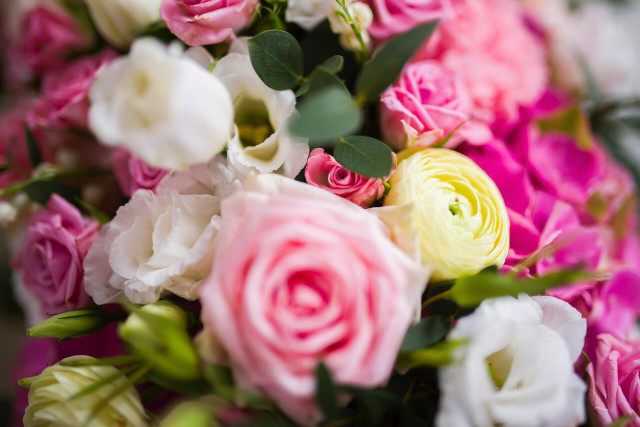


In our journey to embrace more natural, sustainable and eco-friendly beauty and wellness practices, it’s important to stay informed. Let’s take a look at some frequently asked questions about making and using rose water at home.
Can I Make Rose Water Without Boiling it?
Yes, you can make it without boiling, which is particularly useful if you want to preserve the most volatile compounds that might be lost during the heating process. This technique, often referred to as the cold water method, involves soaking rose petals in a jar filled with distilled water and allowing them to infuse over a period of 24-48 hours.
Can You Drink Rose Water Made at Home?
Rose water you make at home can indeed be consumed, provided you’ve used organic, pesticide-free roses and distilled water to ensure purity. It adds a unique floral twist to drinks and desserts. However, consume it in moderation, as consuming a lot of it may cause digestive discomfort.
Can I Use Tap Water for Rose Water?
While you can technically use tap water to make rose water, distilled water is the best choice. Tap water can contain chlorine and other impurities, which may interfere with the quality of the final solution. Using distilled water ensures that you’re creating the purest liquid possible. Filtered water is also a good choice!
Can You Use Dead Rose Petals to Make Rose Water?
While it’s possible to use dried or wilted rose petals, fresh ones are typically more effective as they contain more of the essential oils that give the water its benefits. If you’re using dried or dead petals, make sure they’re pesticide-free and consider using a larger quantity to compensate for the lower oil content. Tip: Read how to dry roses for advice on how to get well-dried rose petals.
Why Is My Homemade Rose Water Brown?
If your homemade rose water turns brown, it might be due to over-boiling the petals, which can cause them to release tannins, resulting in a darker color. It can also occur if you used roses that weren’t completely clean or pesticide-free or if the petals had brown spots. Although a slight color change isn’t necessarily harmful, it’s best to aim for a clear to slightly pinkish hue, which indicates a well-made rose water.
Remember, as you learn how to make any natural beauty remedy, questions are your best tool. The more you understand the process, the more likely you are to end up with a product that offers all the benefits it is known for.
Read more:
- Your Ultimate Guide to Edible Flowers and Their Uses
- How to Make Rosemary Water for Hair: DIY Hair Growth Support for Longer, Stronger Locks
- Rose Hip Tea: Benefits and Preparation
Do you like this post?







